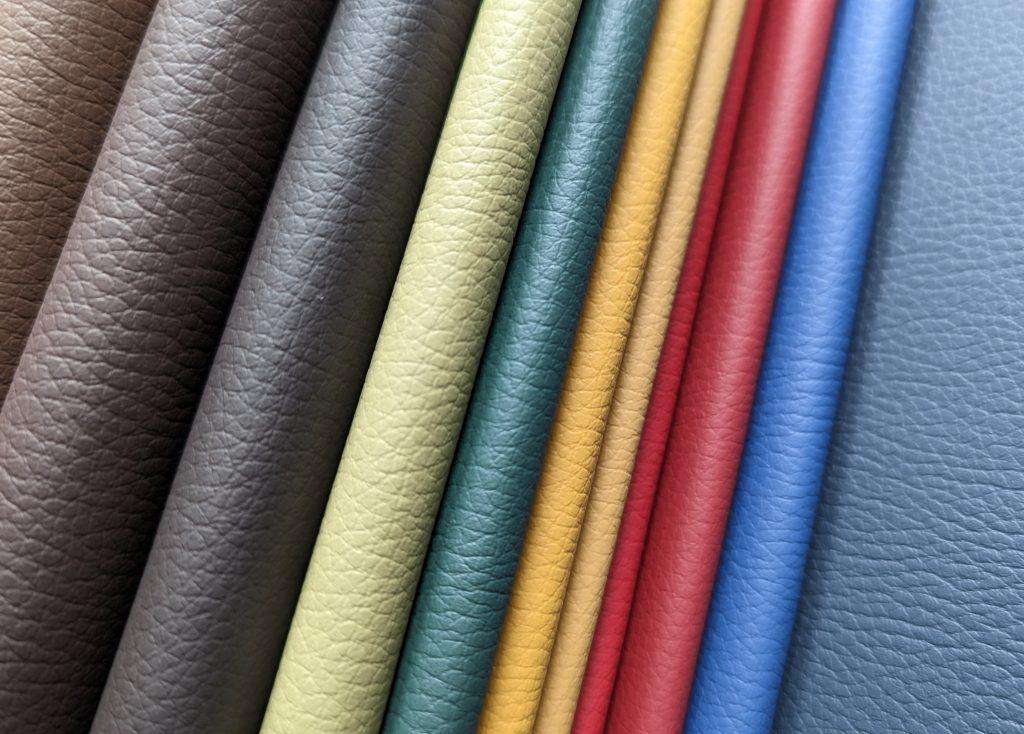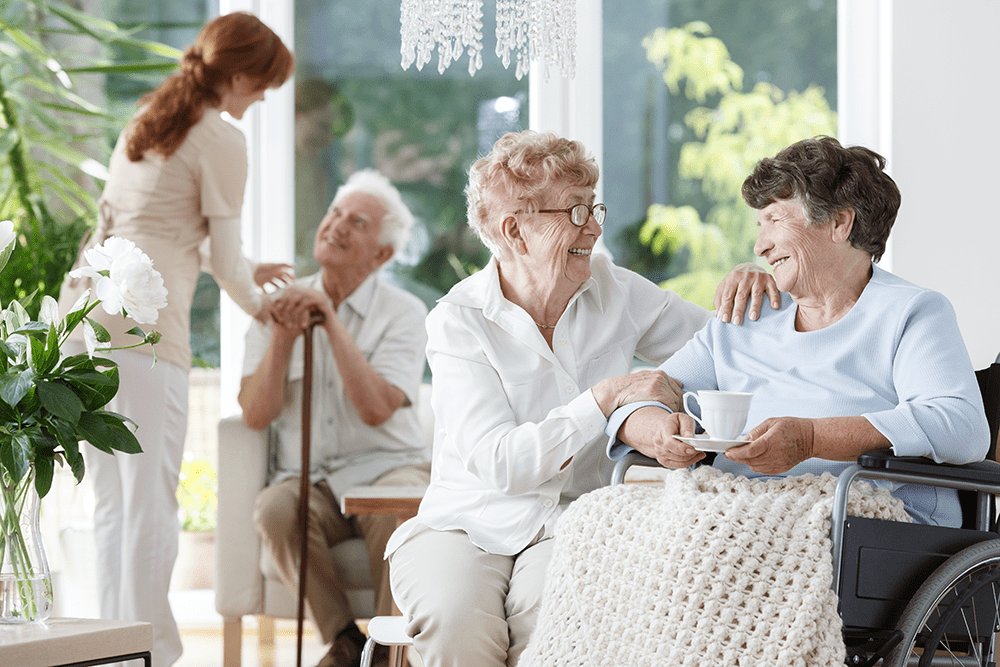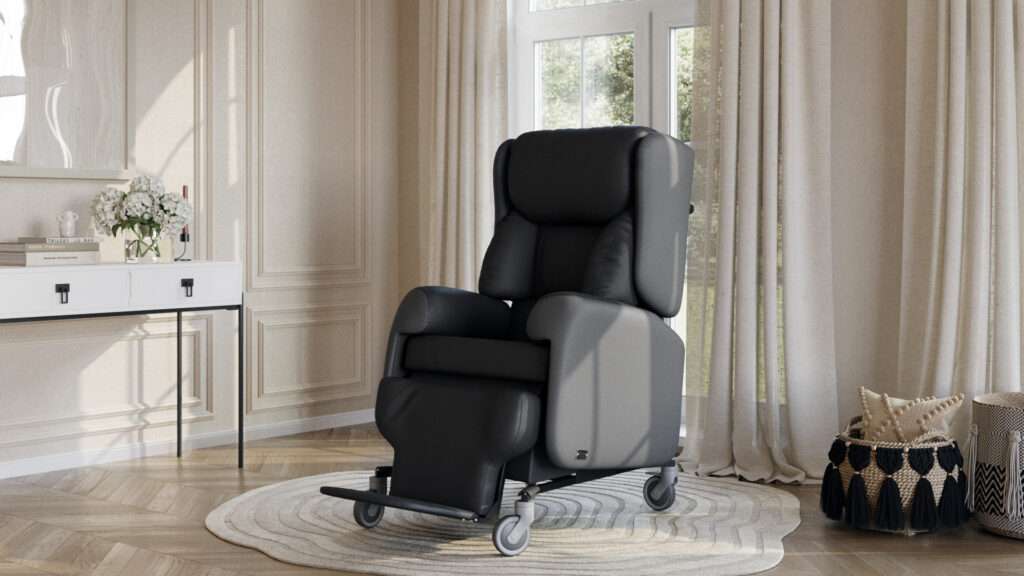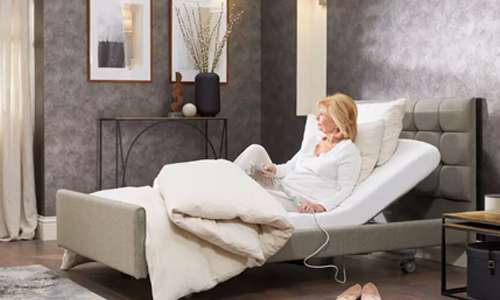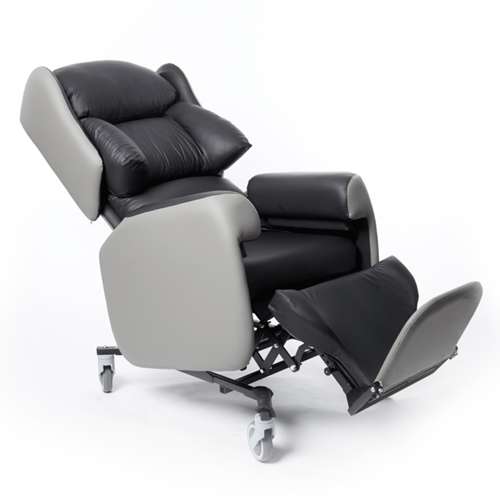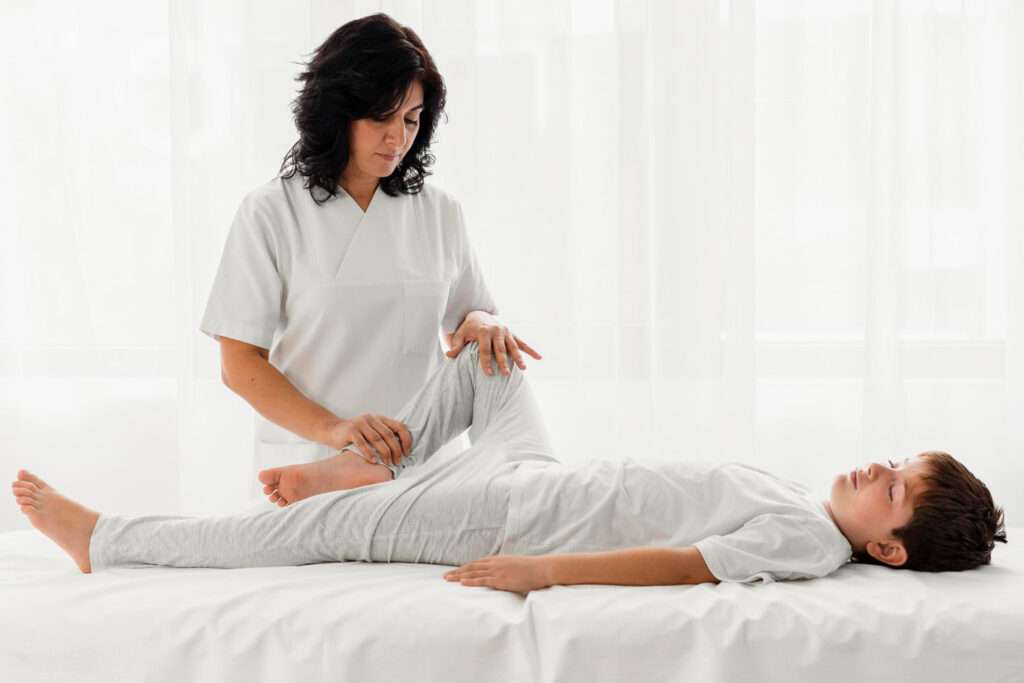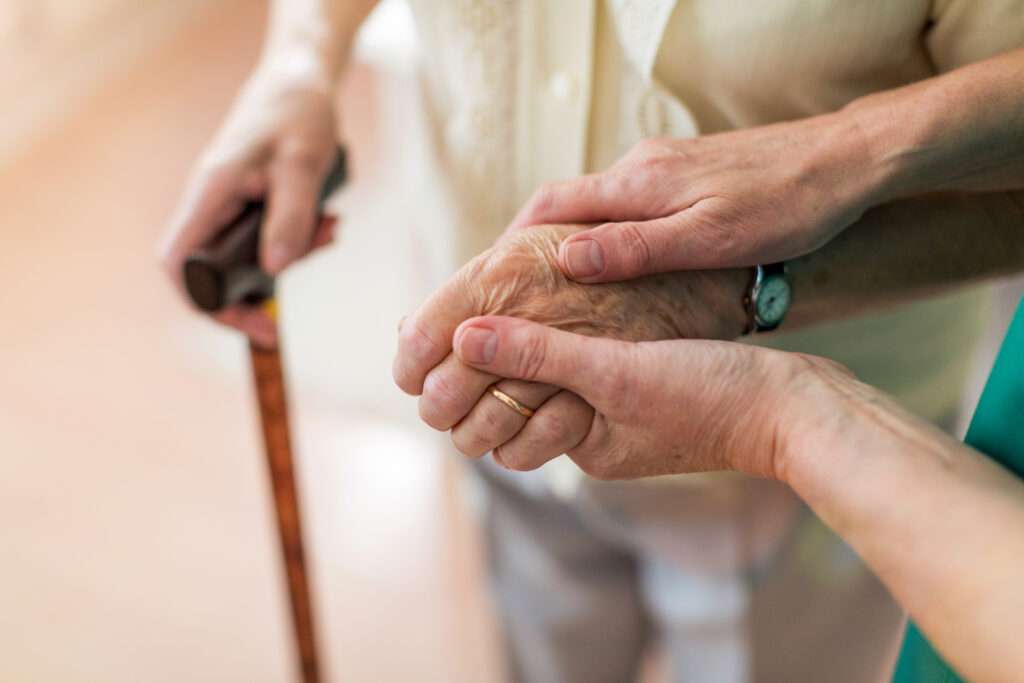Materials are of prime importance in care seating. The right contact surface material is essential to provide comfort and reduce pressure risk for users of therapeutic seating.
In this blogpost we explore the best seating fabrics to choose from, the benefits of each one, and the fabrics we use and recommend across our range.
Jump straight to…
What to Look for in Fabrics for Therapeutic Seating
Firstly, it’s important to outline what qualities we want in seating fabric. The list below sets out the ideal qualities we want to see, sometimes it’s not always possible to achieve all of these but they are useful criteria to measure against.
Fabric Qualities | Details | Examples |
Breathable | Allows water vapour to pass through, sometimes known as ‘vapour permeable’ (VP) or ‘moisture vapour permeable’ (MVP). This helps keep the skin cool and hydrated. | Dartex (vapour-permeable) |
Waterproof | Polyurethane (PU) coated fabrics have high water-repellent characteristics. | Dartex (PU coated)Vinyl (non-porous)PanazFaux leather / leatherette |
Good for infection control | Fabrics good for infection control are antimicrobial, which means they prevent the growth of harmful bacteria. They are usually non-porous, easy to clean and resistant to cleaning chemicals. | Vinyl (durable and non-porous)Panaz (antimicrobial)Dartex (antimicrobial coating)Faux leather / leatherette |
Pressure-relieving | Pressure relieving fabrics are soft and supple, helping conform and flex to the person’s body shape and the degree of pressure applied. | Dartex (4-way stretch) |
Other regulations such as Crib 5 rated (fire retardant) are also important to have, and are standard across most manufacturers.
As you can see from the above, Dartex ticks all the boxes, making it the fabric of choice for the healthcare market. We’ll explain more about the unique properties of dartex in the section below.
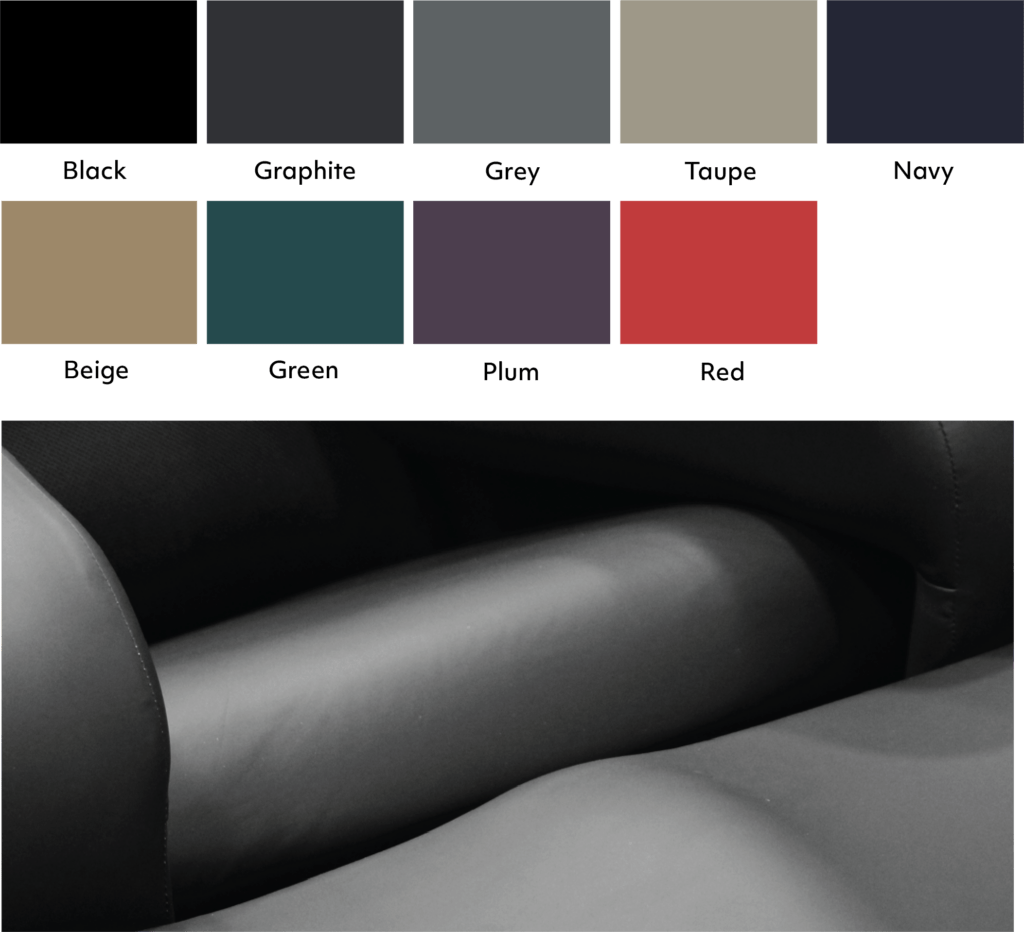
Dartex Material
Deep Dive into Dartex
What is Dartex?
Dartex is a transfer-coated polyurethane fabric that was created in the 1980s for use in the healthcare industry. It is still the go-to fabric for care seating due to its multiple benefits for healthcare patients and relevance to healthcare settings.
What are the Benefits of Dartex?
Dartex has become synonymous with the vapour-permeable (VP) type of fabrics that allow air to pass through while remaining waterproof. This makes the fabric breathable and therefore cooling the skin, whilst preventing water ingress into the upholstery of the chair.
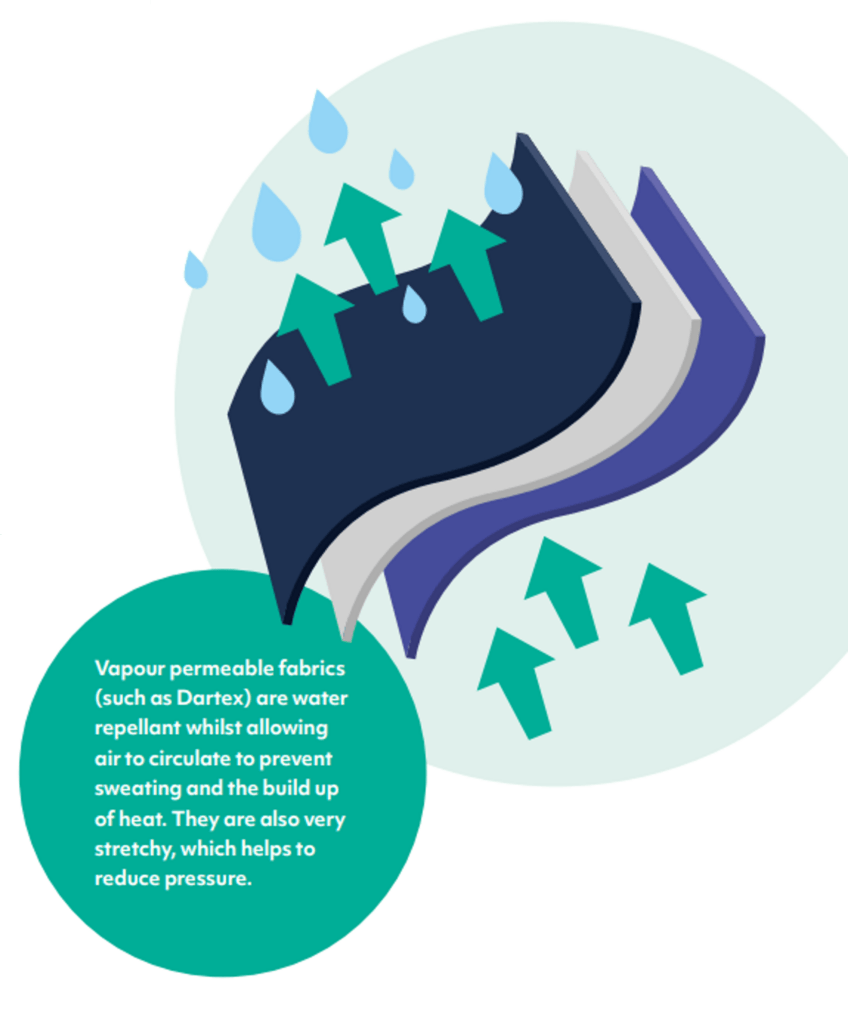
Properties of vapour-permeable fabric
The key benefits of dartex including those outlined above can be summarised as follows:
- 4-way stretch, enhancing pressure relief
- Bio-compatible, not causing any irritation to skin
- Fungistatic – prevents the growth of fungi or mold
- Antimicrobial – prevents the build-up of harmful bacteria
- Water-resistant – waterproof
- Wipe clean – can be cleaned with chlorine-based cleaning products
- Machine washable – at 71 and 95 degrees C
- Micro vapour-permeable – conducts water vapour and heat away from the skin
- Eco flame retardant – Crib 5 and 7 rating
As well as higher moisture vapour permeability, PU fabrics also generate lower friction, preventing shear.
PVC Fabrics
Vinyl
Vinyl is a type of PVC material that is used widely in the healthcare sector because it is hard-wearing and cost-effective, in mattresses, wheelchairs and ward chairs.
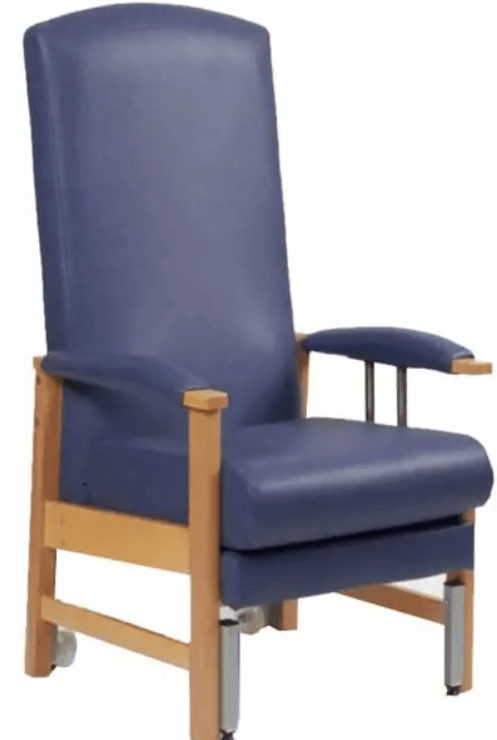
High Back Chair with vinyl upholstery
It is also waterproof, so protects against water ingress which can be bad for infection control. Its hard-wearing surface is ideal for standing up to the rigours of healthcare environments.
One drawback of vinyl and PVC fabrics are that they are not vapour-permeable like PU fabrics, which can lead to moisture build-up. Vinyl is also not very stretchy as it is not a woven fabric like PU, which makes it less supple and therefore less suitable for higher pressure relief. It is worth using vinyl on the outside of a chair that has a bit of stretch, as this helps cushion the knocks and scrapes, making it less likely to tear.
Although not as sought after as dartex, vinyl is heavily used and does well in many applications, not least because it is easy to clean and good for infection control due to its durability and non-porous properties.
Our new HiBack Bedside chair replaces vinyl with a soft 4-way stretch dartex fabric, just one of the many pain points resolved by this revolutionary new chair for hospital wards.
Panaz Fabrics
Panaz fabrics are a range of vinyls which can be made in a variety of colours. They are popular with chair manufacturers for the external sides of chairs, adding a splash of colour which pairs well with the standard dartex colours.
Fabrics We Use in Our Chairs
Our carefully chosen fabrics across our seating range are designed to facilitate infection control, and enable personalisation with different colour options.
The Lento Range
Our Lento seating range covers a wide spectrum of chairs, from care chairs to riser recliners and condition-specific neuro and bariatric models.

Dartex fabric
Our standard fabric combination across the Lento range is the Maximo Faux Leather to the outer surfaces, and dartex to contact surfaces, providing the best of both worlds – quality faux leather which is clinically approved for infection control, and dartex to contact surfaces which is optimised for pressure care and comfort as well as being bacteria-resistant.

Ultima & Maximo Material Colours
For people who like more jazzier colours than our Maximo range, we also have the Agua ‘Paint Pot’ range, popular with kids and young adults! There are bright yellows, reds and blues; get in touch with us to receive the full swatch booklet!
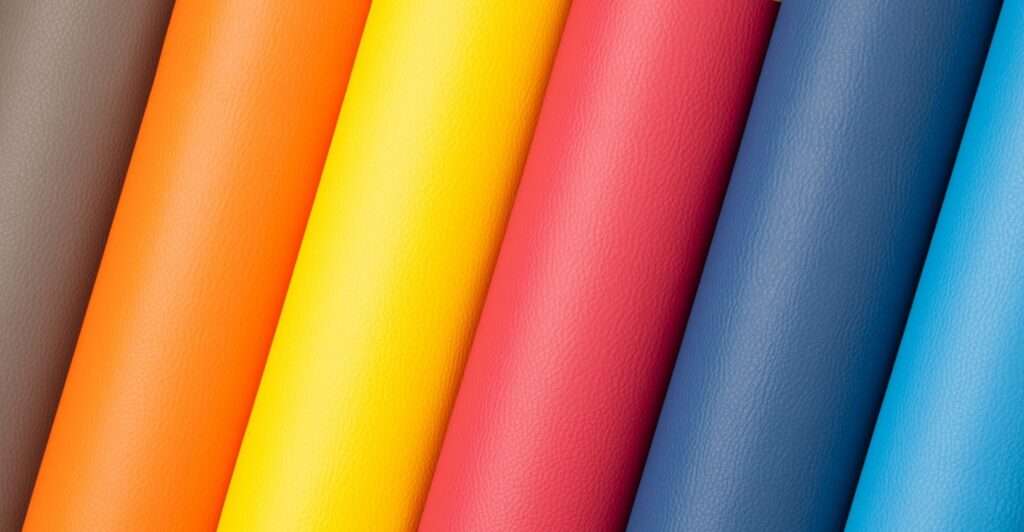
Agua Paint Pot Colour Options
Contact Us For A Swatch Booklet
Conclusion
Vinyl is commonly used on exterior surfaces of chairs, as it is impervious to water and fluids, and stands up well to the knocks and scrapes in busy hospital wards.
For the inside contact surfaces, patient comfort is the prime factor that needs to be considered, along with infection control requirements.
Our fabric of choice for contact surfaces is dartex, a vapour-permeable fabric that has a whole host of patient benefits, being soft, stretchy and providing excellent pressure relief. It can also have an anti-microbial coating to provide a further barrier against bacteria.
Soft fabrics like suede and velour are absorbent so don’t work well for infection control. Faux leathers like Maximo are a better alternative for clinical environments, as they waterproof, however do not offer as much pressure relief as dartex.
FAQs
- Why is the choice of materials important in therapeutic seating?
Materials play a critical role in ensuring user comfort, pressure relief, and infection control in therapeutic seating. The right materials can help reduce pressure risks, improve hygiene, and enhance the longevity of the chair.
- What qualities should I look for in therapeutic seating fabrics?
Key qualities to consider include:
Breathability: Allows water vapour to pass through, keeping the skin cool and hydrated.
Waterproofing: Prevents water ingress and protects the upholstery.
Antimicrobial Properties: Resists harmful bacteria growth and supports infection control.
Pressure Relief: Conforms to the user’s body shape for better comfort.
Fire Retardant: Meets Crib 5 or higher fire safety standards.
- What is Dartex fabric, and why is it popular?
Dartex is a polyurethane-coated fabric designed for healthcare settings. It’s highly breathable, waterproof, antimicrobial, and pressure-relieving. It also provides 4-way stretch and is machine washable, making it ideal for therapeutic and care seating.
- What are the advantages and disadvantages of vinyl fabrics?
Advantages: Durable, waterproof, cost-effective, easy to clean, and great for infection control.
Disadvantages: Lacks breathability and stretch, making it less suitable for pressure relief on contact surfaces.
- What is the best fabric combination for therapeutic chairs?
The ideal combination is:
Dartex for contact surfaces, offering pressure relief, comfort, and infection control.
Vinyl or Faux Leather for outer surfaces, providing durability and resistance to wear and tear.
- Are there colour options available for therapeutic seating fabrics?
Yes, we offer a wide range of colours. For example, the Agua ‘Paint Pot’ range is popular for vibrant designs, especially for younger users. Contact us to view our full swatch booklet.
- Can therapeutic seating fabrics be cleaned easily?
Yes. Fabrics like Dartex are wipe-clean and machine washable at high temperatures, ensuring excellent hygiene standards in clinical settings.
- Why is suede or velour not recommended for healthcare seating?
Suede and velour are absorbent fabrics that are difficult to clean and unsuitable for infection control. Faux leathers and PU-coated fabrics are better alternatives.
- How do I choose the right fabric for my chair?
Consider the user’s comfort, the clinical environment, infection control needs, and durability requirements. For optimal performance, we recommend Dartex for contact surfaces and faux leather or vinyl for exterior surfaces.
If you need more advice, feel free to contact us for personalised recommendations!
Contact Us For More Fabric Advice





